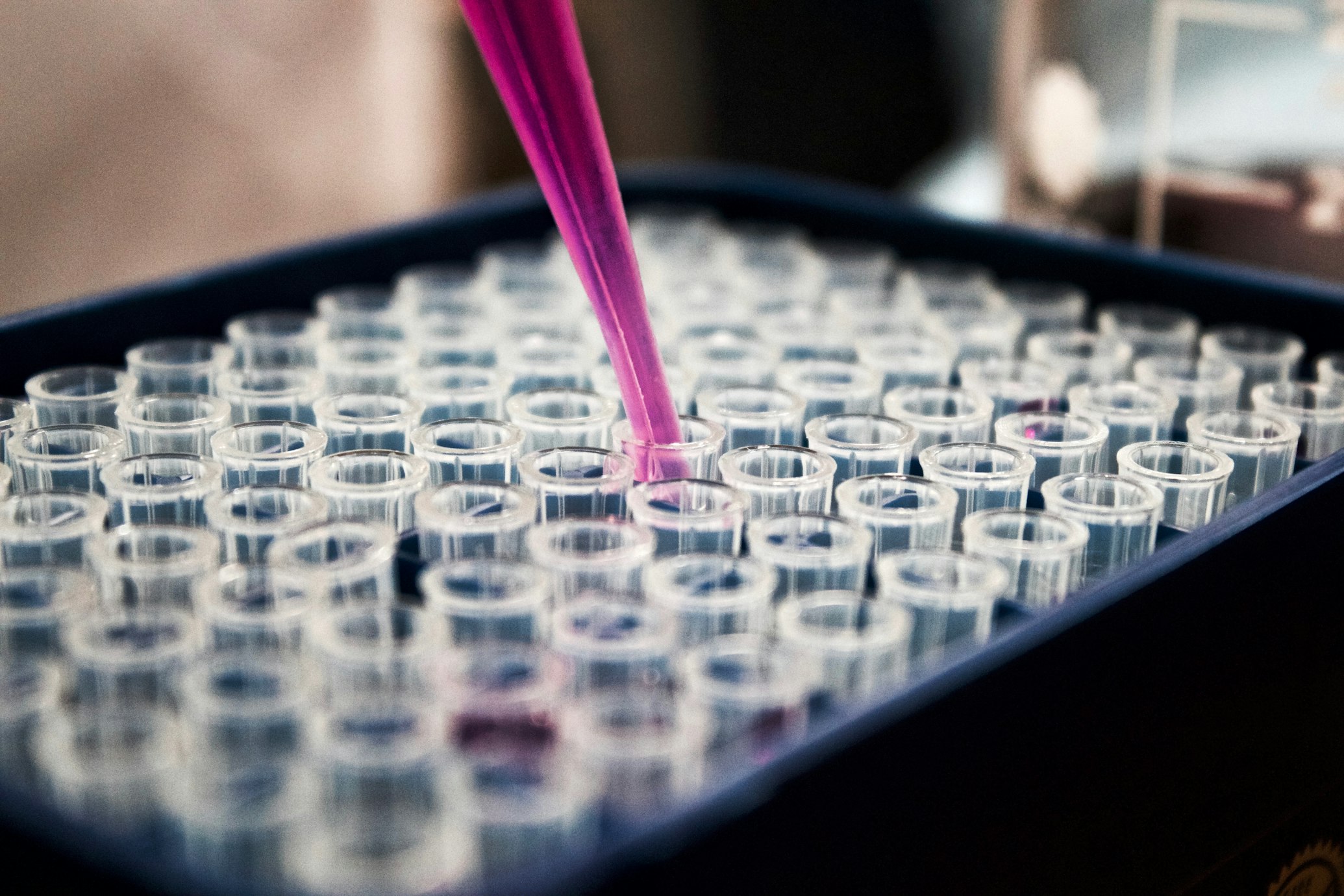The Silent Alchemists
How Molecular Gymnastics Revolutionizes Drug Discovery
"In the nanoscale arena where atoms dance, chemists have taught boron to perform a gravity-defying leap—reshaping how we build tomorrow's medicines."
Article Navigation
For decades, manipulating carbon-boron bonds has been the quiet workhorse of drug synthesis. From anticancer therapies to agrochemicals, organoboron compounds underpin modern molecular design. Yet one persistent challenge remained: coaxing boron atoms to migrate predictably within molecules like agile gymnasts. Traditional methods often required harsh conditions or offered limited control—until a groundbreaking fusion of light and carbene chemistry turned the tide. The emergence of N-heterocyclic carbene (NHC) catalytic 1,2-boron migrative acylation, supercharged by photocatalysis, represents a quantum leap in precision molecular architecture 1 .
The Art of Molecular Umpolung: Flipping Polarity
At the heart of this breakthrough lies N-heterocyclic carbene (NHC) catalysis—a technique where nitrogen-containing organic molecules act as "electron shuttles" rather than traditional metal catalysts. NHCs achieve this through umpolung (German for "polarity reversal"), flipping the innate electronic behavior of carbonyl groups:
Nucleophilic rebirth
Normally, aldehydes act as electrophiles. When an NHC approaches, it forms a covalent bond with the carbonyl carbon, generating a Breslow intermediate—a structure where the former carbonyl carbon becomes nucleophilic 2 .
Radical twist
Under photoirradiation, this Breslow intermediate transforms into a potent electron donor. Photocatalysts (e.g., iridium complexes) absorb visible light, exciting electrons that reduce substrates to form radicals 5 .
"NHCs are molecular coaches—they train unreactive carbonyls to perform radical acrobatics once deemed impossible."
The Boron Migration Ballet
Boron migration isn't new—chemists have long exploited its ability to "hop" between adjacent atoms during reactions. Classical 1,2-boron shifts occur when adjacent groups rearrange, but controlling their directionality and stereochemistry remained elusive. The 2024 breakthrough engineered a solution:
- Designer substrates: Researchers crafted redox-active boronic esters with built-in "radical handles." When reduced by photoexcited NHC intermediates, they generate β-boron radicals primed for migration 1 .
- Dual catalysis: NHCs generate acyl anions while photocatalysts produce radicals. Their synergy creates a "capture-relay" mechanism where radicals trigger boron's leap to adjacent carbons, followed by acylation 1 5 .
Evolution of Boron Migration Strategies
| Method | Conditions | Limitations | Stereocontrol |
|---|---|---|---|
| Classical Suzuki coupling | Pd catalysis, base | Requires pre-functionalized substrates | Moderate |
| Thermal 1,2-shifts | High temperature | Narrow substrate scope | Poor |
| NHC-Photo dual catalysis | Visible light, rt | Broad scope, late-stage functionalization | High (up to 98% ee) 1 4 |


Inside the Landmark Experiment: Lighting the Path
The pivotal 2024 study published in Science Advances 1 demonstrated how merging NHC and photocatalysis unlocks unprecedented efficiency. Here's how it unfolded:
Step-by-Step Methodology
Substrate design
Synthesized boronic esters with adjacent sulfonyl groups (e.g., -SO₂Ph). These act as "radical reservoirs"—easily reduced to form β-boryl radicals.
Catalyst pairing
- NHC catalyst: Bulky thiazolium carbene (e.g., NHC7 with 3,5-t-Bu-phenyl groups) 4 .
- Photocatalyst: Iridium complex [Ir(dF(CF₃)ppy)₂(dtbbpy)]PF₆ (emits blue light).
Reaction setup
Mixed boronic ester (1 equiv), aldehyde (1.5 equiv), Cs₂CO₃ (base), and catalysts in THF. Irradiated with 34W blue LEDs under N₂ at 40°C for 24h.
Radical cascade
- Step 1: Photocatalyst reduces sulfonyl group → β-boryl radical.
- Step 2: Boron migrates to adjacent carbon → transient alkyl radical.
- Step 3: Radical couples with NHC-bound acyl anion → β-boryl ketone after NHC dissociation.
Results That Redefined Possibilities
48 substrates—including drug derivatives (Venlafaxine, Preclamol) 3 —yielded β-boryl ketones (avg. 75% yield).
Bulky NHCs enabled up to 98:2 enantiomeric ratio (er) 4 .
EPR spectroscopy trapped radical intermediates; DFT calculations mapped migration barriers.
The Scientist's Toolkit: Essential Reagents Unveiled
This reaction's success hinges on specialized molecular tools. Key components include:
Research Reagent Solutions for NHC-Photo Boron Migration
| Reagent | Function | Innovation Rationale |
|---|---|---|
| Redox-active boronic ester | Radical precursor; enables boron migration | Sulfonyl group accepts electrons to form β-boryl radical 1 |
| Bulky thiazolium carbene (NHC7) | Umpolung catalyst; controls stereochemistry | Steric bulk prevents racemization 4 |
| Iridium photocatalyst | Generates radicals under visible light | Excited state reduces sulfonyl groups (-1.2 V vs SCE) 5 |
| Cs₂CO₃ | Base; deprotonates NHC precursor | Mild, solubilizes in THF 4 |
| Togni's reagent (CF₃ source) | Trifluoromethylation agent (control studies) | Tests radical tolerance 4 |
The combination of NHC catalysis with photocatalysis creates a synergistic effect where each component addresses the limitations of the other, enabling precise control over boron migration at room temperature.
- Reaction temperature: 40°C (vs >100°C for thermal methods)
- Yield improvement: 20-30% over traditional methods
- Enantioselectivity: Up to 98% ee
Why This Changes Everything: From Labs to Life
The implications ripple far beyond academic curiosity:
Reactions proceed at room temperature using light energy, slashing energy needs versus thermal methods (often >100°C) 5 .
This work inspired enantioselective acyl-trifluoromethylations (98% ee) using similarly engineered carbenes 4 , proving the platform's versatility.
"Late-stage functionalization—once chemistry's Mount Everest—now has a new passage."
The Future: Uncharted Territories
While revolutionary, challenges persist. Current limitations include sensitivity to protic solvents and moderate yields with aliphatic aldehydes. Next frontiers aim to:
Water-compatible variants
Develop using micellar catalysis 5 .
Biorelevant light sources
Engineer (e.g., solar photons) for greener production 5 .
Expand to nitrogen/oxygen
Migrations using analogous designs 3 .
As 2025 unfolds, labs worldwide are adopting this dual-catalytic "dance" between carbenes and light. What began as boron's gymnastic feat may soon evolve into a universal choreography for molecular innovation.
References
References will be placed here
For further exploration, see the landmark study in Science Advances (2024) and the enantioselective extensions in Nature Communications (2025).